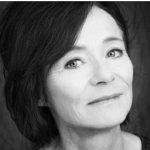Delstat i Sveits vurderer burkaforbud
En kanton i Sveits har med et stort politisk flertall vedtatt at et lovforbud mot burka skal utredes. Målet er et nasjonalt forbud mot ansiktstildekning.
Hege Storhaug, HRSDet er delstaten, eller kantonet Aargau, nord i Sveits som har tatt initiativet til å utrede et lovforbud, melder
Earthtimes. På nasjonalt nivå er det politisk motstand mot forbud. Det er verdt å merke seg at en rekke byer i Belgia i 2004 innførte forbud mot ansiktstildekning, som ledet frem mot det nye nasjonale forbudet i forrige måned. Som jeg skrev i boken
Tilslørt. Avslørt. Et oppgjør med norsk naivisme (2007): ”Kun i ett land i Europa er det innført et eget forbud mot ansiktsslør i det offentlige rommet. De fem belgiske byene, Antwerpen, Gent, Sint-Truiden, Lebbeke og Maaseik bøtelegger kvinner med ansiktsslør. Burka-bøteleggingen ble besluttet i 2004, og boten er på 125 euro, i underkant av 1000 kroner.”
The local council in Aargau, a canton (state) in the north of Switzerland along the German border, voted overwhelmingly to work on a state initiative to make wearing the burqa in public places illegal. Most major parties backed the move.
Pushing the motion forward, the centrist and right wing parties in favour said the garment was a «symbol of male dominance over women,» according to the Swiss news agency SDA.
The parties also said the full body veil prevents the integration of migrants into Swiss society.
The Socialist party objected to locally legislating on the matter, but members noted that they had negative views on the burqa, citing feminist concerns.
The Green party was opposed, saying the proposal was «hysterics» and a scare-mongering tactic.
It is estimated that less than 100 Muslim women across Switzerland wear the burqa, a full body and face covering.
Bans on the burqa are being mulled in other Swiss cantons, including Bern.
The Swiss Federal Council, the executive branch of government, earlier this year said it opposed a ban, noting the small number of women involved.

